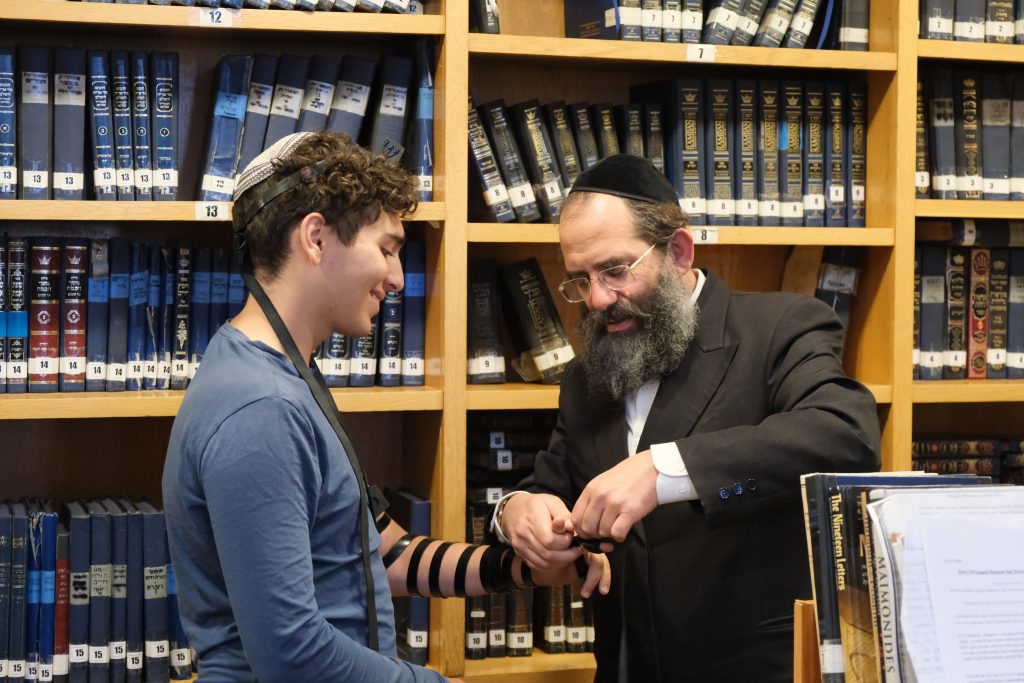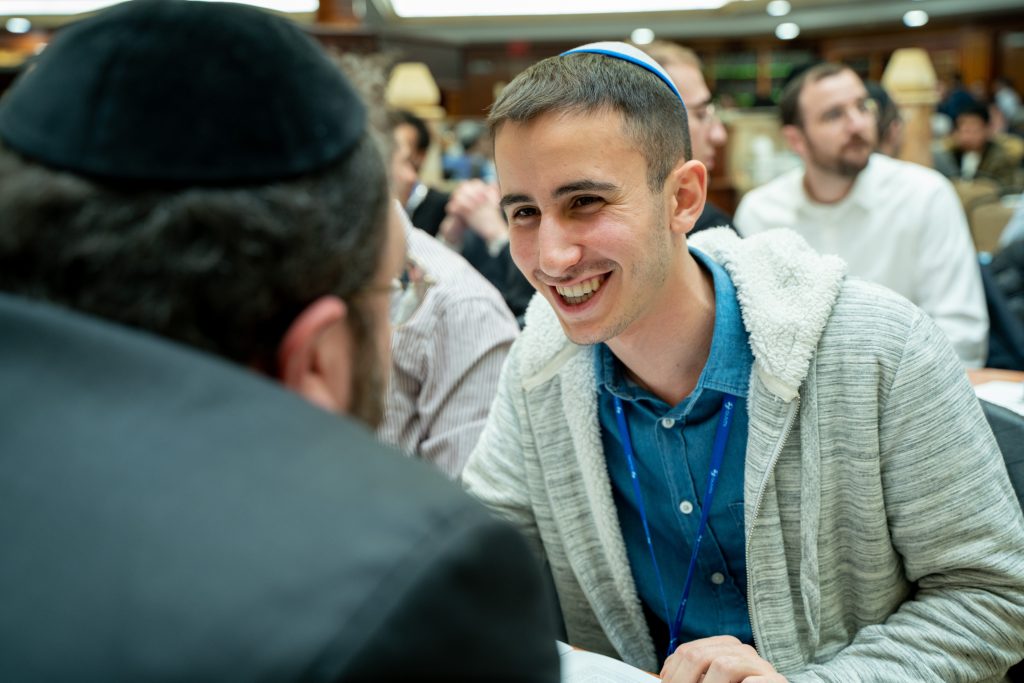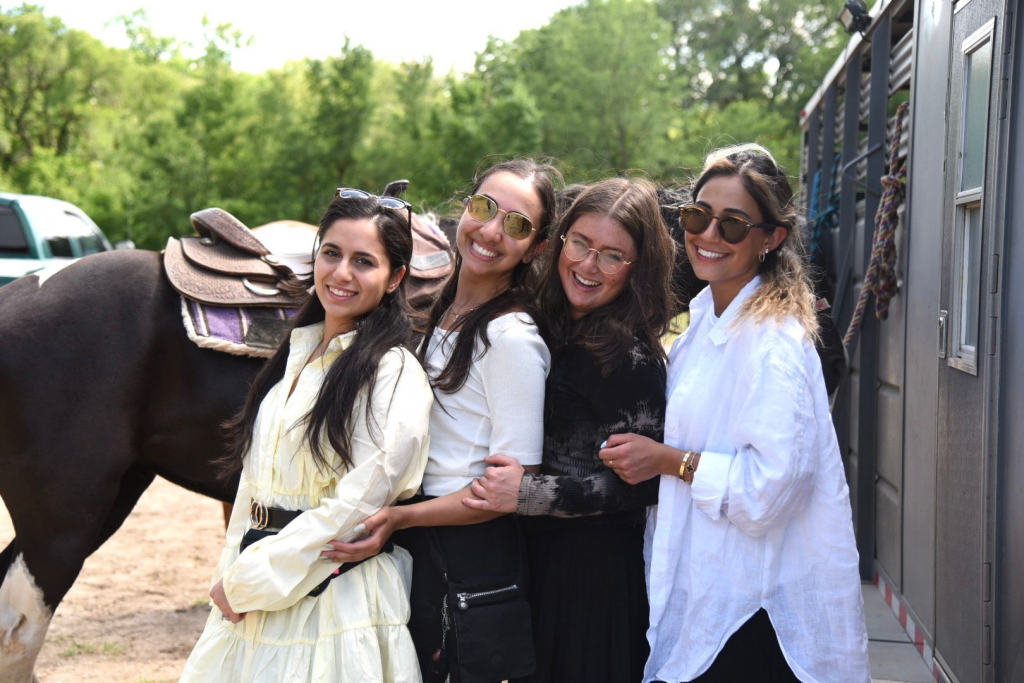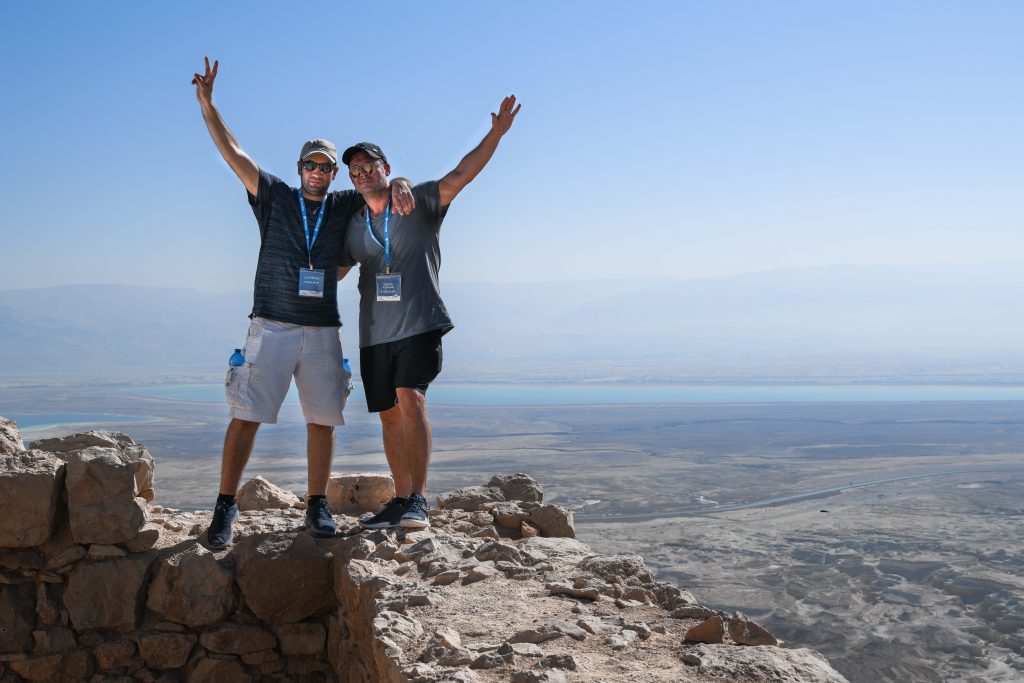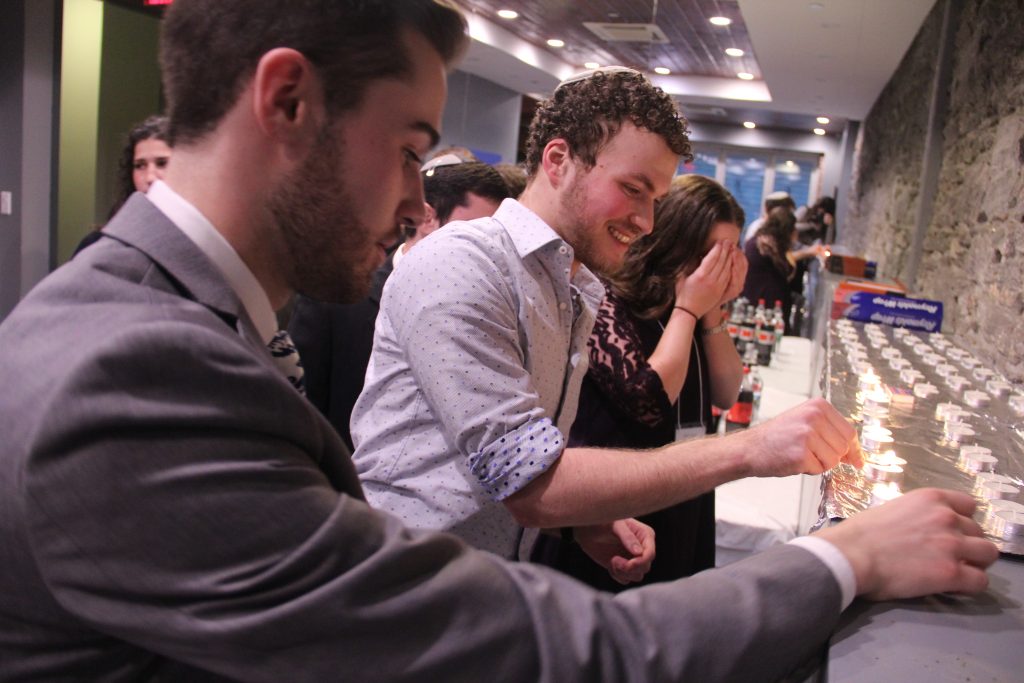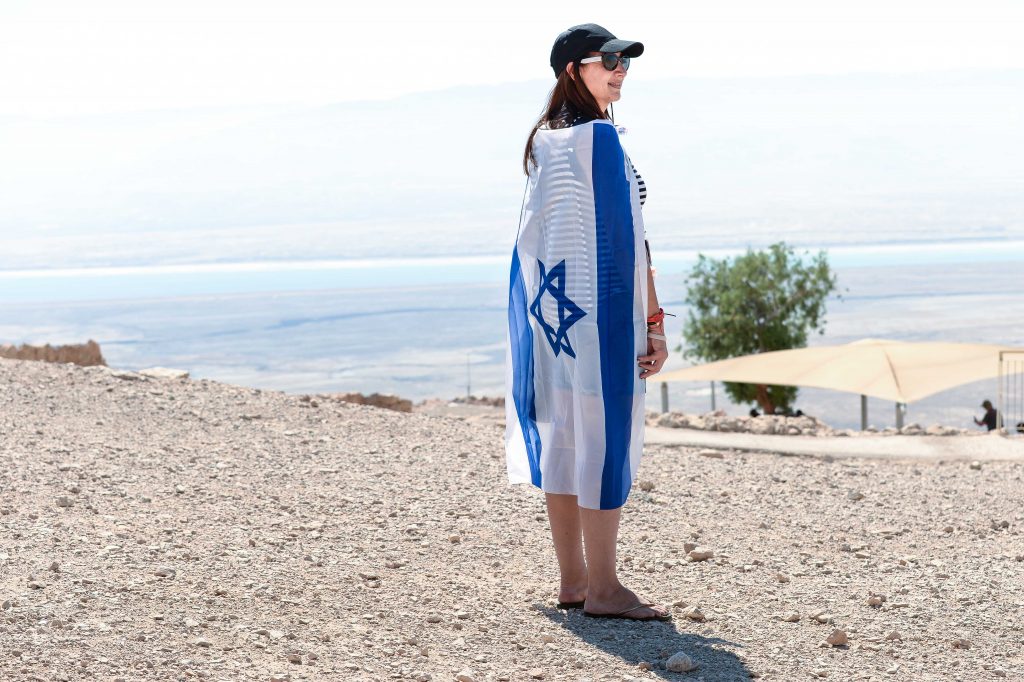The State of Jewish Outreach
Jewish Action seeks to provide a forum for a diversity of opinions within the spectrum of Orthodox Judaism. Opinions expressed do not necessarily reflect the policy or opinion of the Orthodox Union.
How is Jewish outreach faring today? Has it changed? Is it working?
I recently dug deeply into the subject.1 What I found surprised me: kiruv is certainly different than it was in the heyday of the 1990s, but it is very much alive, has had some great successes and, in some ways, even has advantages over the past.
Here are six points to consider.
1. Assimilation
A rosh yeshivah once suggested to me that the best investment we could make to fight assimilation would be to subsidize the Conservative movement’s Ramah camp network. He was joking, but he had a valid point. Historically, most ba’alei teshuvah grew up with traditional parents or grandparents and attended some kind of Jewish school or camp. While afternoon Hebrew schools were not paradigms of success, they did offer basic Hebrew reading skills and rudimentary Jewish literacy that helped Jews feel comfortable when entering a shul or attending a class later on in life.
This phenomenon is less common nowadays. “Few [unaffiliated] Jews these days have memories of a Bubby or Zeidy—or anything Jewish,” explains Slovie Jungreis-Wolff, a noted teacher, author and relationships and parenting instructor for Hineni Heritage Center, a Jewish outreach organization founded by her late mother, Rebbetzin Esther Jungreis. Even worse, after decades of assimilation and high intermarriage rates, it is getting difficult to sort out halachic Jews from those who aren’t, and increasingly rare to find families in which everyone is halachically Jewish.
There are numerous exceptions, though, including many Jews from the former Soviet Union, Israel and South America as well as Sephardim, all of whom tend to have a stronger Jewish identity. Even so, much work with these populations remains to be done. As Rivka Muskat, associate director of Emet Outreach, a multifaceted educational and outreach organization based in Queens, New York, warns, “The coming generation is American born and bred and is not as traditionally moored.” Despite this, outreach work with these groups remains phenomenally successful. According to the 2020 Pew study, 32 percent of Jewish adults today are first- or second-generation immigrants. Rabbi Micah Greenland, international director of NCSY, reports that among public school teens engaging with NCSY most deeply (on Israel summer trips, for example), the percentage from immigrant families often exceeds 50 percent.
Noting this trend, NCSY has been strategically focused for the past several years on inspiring the Jewish teen populations of many of these second-generation American families: Persian Jewish teens in Great Neck, New York; South American Jewish teens in Florida; Israeli Americans in Los Angeles, Las Vegas and elsewhere; and many other second-generation immigrant communities.
In fact, Emet Outreach—which focuses mostly on these communities—has doubled its staff in the last few years. During a recent visit to the organization, I was happy to see sheva berachot held for different students every night of the week.
Of course, the challenge isn’t just about Jewish literacy and knowledge. Judaism emphasizes traditional values and the West has largely moved away from those very values. In the big cities, where most Jews tend to live, atheism, drugs and promiscuity are common. Liberalism is strong among many Jews today and can be a major hindrance to religious growth. In addition, mental health issues across the country have increased across all demographics, perhaps especially among the young. One recent study points to the severity of the issue. Data was collected from more than 350,000 students on over 300 campuses from 2013 to 2021.2 Researchers found that “the mental health of college students across the United States has been on a consistent decline for all eight years of data analyzed, with an overall 135 percent increase in depression and 110 percent increase in anxiety; the number of students who met the criteria for one or more mental health problems in 2021 had doubled from 2013.” Indeed, up to 44 percent of college students today suffer from depression and/or anxiety according to a recent article on the Mayo Clinic website.3 This phenomenon has a definite impact on outreach. As one experienced mekareves said, “Before we can begin teaching them Torah, we need to make sure they are happy, stable human beings. Most are. Some aren’t—they need some encouragement and building.”
The flip side of this lonely and liberal generation is that many young people today are attracted to the strong sense of meaning and community found in the Orthodox world. “People used to be much more judgmental than they are now,” says Rabbi Mendel Dubov, director of Chabad in Sussex County, New Jersey. “Today, it is expected that people be respectful of all types of lifestyles, including ours. They feel they are supposed to be curious and knowledgeable about different ways of life. This gives us a foot in the door and is a big plus in kiruv right now.”
Interestingly, though, the new focus on “happiness” over “truth” has also proven to be enormously helpful to outreach.
Indeed, in many ways, young men and women today are more open than ever before. Pluralism is “in.” Several educators suggested to me that once a connection is made, outreach today is in some ways easier than it was decades ago. Evidence of this openness and interest in Jewish ideas is everywhere. CTeen, Chabad’s international teen network, which was founded in 2008, started small and already has over 600 chapters worldwide. Olami, created in 2007, also started modestly but has been experiencing double-digit growth yearly and currently has over 300 chapters in twenty-eight countries. The number of visitors to aish.com and Chabad.org is in the millions and increases annually.4 This phenomenal growth across the board indicates that the demand for Jewish knowledge is large—and proliferating. NCSY continues to expand, now running over 250 after-school Jewish Student Union (JSU) clubs in public high schools across the US and Canada and taking more public-school teens on month-long Israel trips in the summer than the non-Orthodox movements—and more than ever before in its own history.
2. Technology
With the ongoing distractions of contemporary life, attention spans have gotten shorter. The endless access to information has paradoxically made it more difficult for people to think.
Of course, the Internet offers great new tools for outreach. For the first time in history, all levels and types of Torah learning are easily and immediately available to anyone who is interested—anytime, anywhere. And it works. More and more Torah teachers are reporting that students are learning online and seeking them out. “It is remarkable how those totally alienated from Torah knowledge are able to develop a deep connection to Torah online,” says Ruthie Simon of Kesher/The Learning Connection in the United Kingdom. Rabbi Steven Burg, CEO of Aish, emphasizes that “social media is not just a place for . . . entertaining . . . content, it’s our core educational signature.” It enables outreach organizations to recruit students and easily keep in touch with them; an increasing number of Aish’s students and program participants are coming via social media. It isn’t just about information anymore. (See the sidebar on page 54 for more insights on social media’s impact on outreach.)
3. Truth
Remember all the books and lectures “proving” Torah is true? That was so “1990s”! We are in what Rabbi Gidon Shoshan, deputy regional director of North America and the UK for Olami, calls the “Post-Truth Generation.” In the sixteenth and seventeenth centuries, the scientific revolution changed the way people see the world. No longer would the beginning point of discussion be religious belief as it had been throughout most of history. Science, facts, rationality and objective truth became the barometer of decision-making. This “fact-based” view of the world held sway for most of the eighteenth, nineteenth and twentieth centuries and is largely responsible for the great progress in technology the world experienced during that time. Things, however, have changed. Today, more and more, facts are being sidelined in favor of feelings. The discourse is centered on what a person feels reality should be, not on what it objectively is. It isn’t about issues at all. Indeed, when I asked kiruv professionals what issues were popular today, most responded that there weren’t any: fewer people in 2022 are asking questions.
Nowadays, it’s about my feelings. My identity. My mental state. Many people focus on career, and they feel enormous pressure to succeed. All of this leads kiruv professionals to offer more introductory “self-help” wisdom in the early stages of an individual’s Jewish growth. Additionally, people feel they have less time to learn. The ba’alei teshuvah of yesteryear often came to yeshivah for a year or two. They were searching and wanted to know. In 2022, six months is considered a long stay—if they come at all.
Interestingly, though, the new focus on “happiness” over “truth” has also proven to be enormously helpful to outreach. People are looking for friendship and support. They want to be happy and comfortable. Jackie Glaser, director of leadership development for Olami, explains that the organization “focuses more on meaning, purpose, and providing interesting and potentially transformative experiences.” Outreach professionals today “have a real advantage,” believes Rabbi Shlomo Landau, North American director of Olami mentors. “Young people often do not have many deep relationships,” he says. “They crave such relationships and respond to someone who listens and cares.”
Echoing this sentiment, Rivkah Slonim, education director at the Rohr Chabad Center for Jewish Student Life and a lecturer on Jewish medical ethics at Binghamton University in New York, notes that “what people want and need more than anything else is to feel understood, loved and accepted for who they are.” Indeed, while the search for truth is rare these days, the search for relationships, meaning and happiness is common—and Judaism is a popular resource for it. Rabbi Greenland elaborates on this phenomenon: “While teens today may not be specifically searching for meaning or truth, once they experience the meaningful connections that our experiences and lifestyle provide, they immediately appreciate it and recognize it as something they want and need in their lives.”
4. Consolidation
For many years, an annual convention called AJOP (Association for Jewish Outreach Programs) was held in Baltimore, led by the venerable Rabbi Yitzchok (“Itchie”) Lowenbraun, z”l, who brought together hundreds of Jewish outreach professionals from dozens of independent kiruv organizations around the world. Today, AJOP is no more. However, there seems to be less of a need to bring together disconnected organizations as considerable consolidation of the varied outreach organizations has occurred over the years. Outside of Israel, there are only a few big players today. The vast majority—in some places, the near-totality—of local outreach organizations are affiliated with one of the main international umbrella organizations:
(1) The teen space is led by the legendary NCSY and the growing Chabad equivalent, CTeen, each of which has hundreds of chapters in the US alone.
(2) On the college campus, aside from the highly successful OU-JLIC program, which focuses on Orthodox students, there are two large umbrella organizations that are increasingly ever-present: Chabad and Olami (each with hundreds of locations and growing).
(3) The young professional demographic is also being serviced by Chabad and Olami, both of which have dozens of centers.
(4) The kiruv scene for parents with kids and for “older folks” is less homogeneous. Chabad, a loose network of Aish branches, community kollelim and countless independent “mekarvim” are some of the options. Empty nesters in particular seem to constitute a growing category. Rabbi Yitzchok Preis, director of outreach for Cincinnati’s Community Kollel, points out that the values of this population are more traditional and that seniors, generally speaking, have more time to explore, which explains their outsized presence in the kiruv world.
Overall, I believe the consolidation of the Jewish outreach world is beneficial. Fewer resources are wasted. Successful programs are easily shared and economies of scale applied. Concurrent with this consolidation (in most of the groups mentioned above), it seems there is less “in-fighting” now than in the past. Why is that? Suggestions include: (a) the centralization of outreach just mentioned—those who get funding from the same donors are more motivated to get along; (b) experience— we’ve seen the damage in-fighting can do and try harder to avoid it; and (c) increased homogeneity among the groups; while there still are significant differences in approach to outreach (Olami offers more advanced learning programs, for instance, and Chabad more “experience the mitzvah” type of activities), the kiruv scene on the whole is more “unified” than before.
5. Realism
I once believed we could (and soon would!) put a stop to assimilation and intermarriage. It didn’t happen. After decades of outreach on the part of numerous dedicated and effective organizations, we have yet to see a massive numerical return to Torah. For the time being, al pi derech hateva, it seems that most secular Jews are simply unlikely to become fully Orthodox.
Due to this recognition, the goals and modalities of kiruv are more “realistic” today. While more serious students are guided along a path leading to yeshivah or seminary, lighter frontline programs have also developed. Rabbi Avraham Edelstein, education director of Neve Yerushalayim College for Women, calls this approach “pre-outreach,” where we focus on having unaffiliated Jews develop Jewish feelings and connections. Examples of this approach include Birthright programs (free ten-day introductory trips to Israel); Momentum trips (formerly JWRP, affectionately called “Birthright for Moms” and, recently, Dads); NCSY’s Relief Missions (short chesed trips to rebuild communities damaged in a hurricane, for instance); and Justifi’s (socially conscious chesed) trips to a host of locales.
“Free entertainment is everywhere,” says Ruchi Koval, co-founder and associate director of the Jewish Family Experience, a family education center and Sunday school located in Cleveland, Ohio. “In order to attract the attention of our potential clients, we sometimes have to engage in ‘edutainment’ before we can teach pure Torah.” Rabbi Dave Felsenthal, a nonprofit consultant, explains that today it is harder to recruit from the frontlines directly into “serious” Torah programs, so we focus more on introductory programs. While some criticize this trend and yearn for the days of “real” kiruv programs (“Torah is true! Accept it and change your life!”), the current model of varied programs and levels (gently encouraging growth without imposing it) appears to me to be more attuned to the reality of the generation. It also seems more honest: We hope you’ll go far with your Jewish growth and are here to help you along the way, but we will try to provide whatever type of Jewish experiences you are interested in right now in your life, as long as they are authentic.
This “more realistic” model has also shifted the focus to different demographic groups. Years ago, outreach was targeted almost uniquely toward college students. With lots of time on their hands and few responsibilities, college students were seen as those with the most potential to change and grow. No longer. Why is that? For many reasons (including but not limited to social pressure), experience has shown that it is hard for college students living on campus to stick with Jewish growth over the long term. Furthermore, as is often noted, “the college student today is the high school student of yesterday; the young professional today is the college student of yesterday.” In other words, maturity levels have, on the whole, decreased, and the time it takes to change has increased. Cognizant of this reality, Olami now funds two to three trips to Israel per student instead of the single-trip maximum it used to have, and both Olami and Chabad are investing more and more in the young professionals space.
Over the past six years, OU-JLIC has spearheaded the development of Yavneh, a successful network of student leaders and activists. These student leaders are now graduating and looking for ways to utilize their organizational skills within their new community settings. Building on the Yavneh model, OU-JLIC is creating Yavneh Bayit, a grassroots peer-to-peer engagement and leadership development network that will galvanize this passion and commitment toward the aim of better supporting the Jewish and Torah needs of young professionals and their communities.
It is also important to note that while the kiruv movement was once focused on putting out the fire of assimilation and intermarriage—there simply wasn’t time (or money) to focus on those formerly secular Jews who had already become religious—today there is greater recognition that the decision to keep Shabbat (or even becoming frum) is only one step in a journey. One Chabad campus shaliach in Canada told me he devotes Sunday afternoons to calling former students—and not just for fundraising. “I’ve invested years in these neshamot. How can I just ‘move on’? They need me.” Emet Outreach in Brooklyn has hired several educators who are fully dedicated to helping former students who are already religious; many are married, with children in frum schools. NCSY now runs a robust NCSY alumni division, providing Jewish resources to their graduates to maintain and further advance the growth their students experienced during high school. This type of activity from a frontline kiruv organization was rare twenty years ago but is quietly becoming the norm.
While perhaps less exciting than the “messianic” view of kiruv that once existed, this new realistic view is proving more effective in responding to the actual needs of the Jewish people and gives me lots of hope for the future.
6. Israel
When I first got involved in outreach in the 1990s, Israel was “the place to be.” Indeed, when a secular Jew anywhere showed some interest (and often even when he didn’t!), the goal was to get him to Israel as quickly as possible and have him stay as long as possible. As far as I can see, this is no longer the case and no longer the attitude in most outreach circles.
While Israel is, of course, still an important part of the process, some Israel trips have become less effective. Students are constantly on their phones and Israel is full of distractions, explains Rabbi Chaim Willis, executive director of Aish South Africa. Sometimes, a trip to Poland, South Africa or Peru offers a better opportunity for students to disconnect and think. Also, learning Torah in Israel often occurs later in the process than it used to, and even students who do end up learning there generally come for shorter periods of time.
As most students today are spending less time in Israel, what other options are available to them? The list is long. The following are just some highlights:
(a) Online outreach abounds, from aish.com and Chabad.org to regular learning programs such as Olami’s Souled (online beginners’ community and classes for women), Shteig (weekly learning chavrutot) and numerous other programs. In addition, there are more Jewish podcasts and classes available online today than one could ever listen to in a lifetime!
(b) There are countless introductory programs in North America run by Chabad, Olami, NCSY and various local organizations.
(c) Ba’al teshuvah yeshivot in the US are very popular. Chabad’s Morristown is packed. Olami’s Shaar program (housed at Sh’or Yoshuv in Far Rockaway, New York) has revolutionized yeshivah options in the US; one can learn full time or work in Manhattan (and learn part time) while living in and benefiting from a yeshivah environment. Similarly, Olami West’s LA Sem offers wonderful options for young women in a growth mode.
(d) Yeshiva University offers an introductory Mechina Pathways Program on both its men’s and women’s campuses designed for those students looking to grow religiously while pursuing a university course of study.
(e) Sinai Retreats, Heritage Retreats and other “outdoor” programs (think “Outward Bound” with a Torah/outreach feel) have grown in popularity and impact, getting students out of their routines and into a growth environment.
(f) Finally, there is community life. Many mekarvim prefer to integrate beginners into the observant community rather than send them off to Israel. Rabbi Shimon Feder, director of the Jewish Education Center (JEC) of South Florida, reports that the results so far seem better than the old (Israel-based) model. Rather than a short immersive experience in Israel, followed by culture shock and starting again from scratch upon their return to the US, this new model has students visiting and eventually moving into observant communities much earlier on in their Torah journey. The learning curve is much slower, but arguably healthier and more solid.
So is kiruv dead, as some have claimed?
No. The kiruv movement is larger, more unified, more professional and more effective than ever before.
What is dead is the overly optimistic view that we would quickly bring all Jews back to full Torah observance. Until Mashiach comes—hopefully soon!—it is hard to see that happening. We are more sober now, and that is good. It allows us to be more effective.
What else has changed? As we said above: there is less Jewish knowledge, truth-seeking and Israel focus; more technology, realism, unity and openness. It’s complicated but good.
What hasn’t changed?
“The methods to meet students change. The core does not. Call students. Care about students. Drink coffee with students. . . . The only way to success is to develop relationships,” says Rabbi Yonason Quinn, co-founder of Olami West. Rabbi Eli Silberstein, founder and director of the Roitman Chabad Center at Cornell, claims that nothing has really changed. “I teach the same Torah, wrap the same tefillin on my fellow Jews, and try to be an example in my daily conduct. Even if the world changes, I’m a constant. In this lies the real impact. It reflects a Judaism that transcends time and space. . . . It’s what people are truly looking for.”
The kiruv movement is larger, more unified, more professional and more effective than ever before.
One more thing hasn’t changed: our potential for impact. While the global picture of assimilation is certainly sobering, nearly all of the educators I spoke with mentioned how busy they are with the many Jews who are interested, and how happy they are with their career choice—their involvement with outreach has had a huge impact on students and helped their own families stay inspired. In truth, anyone who gets involved in outreach today can be busy 24/7. There is a great thirst. Dozens of positions are available, and the field is growing.
Does it work? Yes. True, it doesn’t always work. Some people will not move Jewishly at all no matter what you say or do. However, at the other end of the spectrum, some teens, students and young professionals will become fully Orthodox, as we see happening day in and day out, whether through NCSY, Olami, Chabad or a local organization. Try and find a Jewish community today without ba’alei teshuvah, including young ba’alei teshuvah!
Many Jews touched by kiruv remain somewhere in the middle. While they may not “go the whole way,” they are open to strengthening their observance, knowledge and connections.
Indications of the power and potential of outreach are everywhere. Conservative estimates count at least 2,000 new ba’alei teshuvah worldwide per year, and possibly more.5 Tens of thousands are attending Israel-based and other inspirational trips and programs. Hundreds of thousands are connecting through Torah online. Rabbi Avraham Edelstein once (correctly) wrote in these pages that building communities deserves more attention than it gets: “The teshuvah movement has been remarkably successful in this arena, building Houston, Dallas, Atlanta . . . and many other thriving Torah communities that started out virtually from scratch. Around the globe, there are tens and tens of such cities, comprising tens of thousands of Jews.” Indeed, including the children of ba’alei teshuvah, it is inarguable that hundreds of thousands of Jews have come back.
One recent great success: in May, over 600 secular students attended the Olami Summit and were incredibly inspired by a week of networking, growing, fun and learning. Why “only” 600? Because there was no room left in the hotel! Indeed, most outreach organizations were very resourceful throughout the pandemic—and grew stronger.
Today, it is realistic for a kiruv professional to significantly affect hundreds or even thousands of lives. It is also realistic for an average ba’al habayit—with a minimum of effort and no particular knowledge required—to mentor a Jewish student, bringing the student closer and inspiring the mentor’s family along the way.
Kiruv has changed, but it is alive and well—and growing.
Notes
1. Educators consulted include: Rabbi Yisrael Abisror (YEHUDI Orlando), Rabbi Shlomo Abrams (DATA of Dallas), Rabbi David Begoun (L’Chaim Center of Chicago), Rabbi Glenn Black (NCSY Canada), Rabbi Steven Burg (Aish), Rabbi Avi Cassel (Olami), Rabbi Jack Cohen (Hebrew Academy of Miami), Rabbi Yaakov Cohen (TORCH of Houston), Rabbi Avraham Edelstein (Neve Yerushalayim), Steve Eisenberg (Miami), Rabbi Shimon Feder (JEC of South Florida), Rabbi Jonathan Feldman (Tribe Tel Aviv), Rabbi Dave Felsenthal (Consultant), Rabbi Yerachmiel Fried (DATA of Dallas), Liat Garelick (Olami’s Seriously Souled), Jackie Glaser (Olami), Rabbi Micah Greenland (NCSY), Rebbetzin Esti Hamilton (London), Rebbetzin Slovie Jungreis-Wolff (Hineni), Rabbi Shlomo Landau (Olami), Rabbi Raphael Leban (The Jewish Experience of Denver), Robin Davina Meyerson (Project Inspire Arizona), D’vorah Miller (Ikaron, an Orange County–based Hebrew school), Rivka Muskat (Emet Outreach, Queens), Rabbi Avraham and Rebbetzin Goldie Plotkin (Chabad of Markham, Ontario), Rabbi Menachem Posner (Chabad.org), Rabbi Yitzchok Preis (Cincinnati Kollel), Rabbi Yonason Quinn (Olami West), Rabbi Shimon Rivkin (Chabad CTeen), Gila Ross (Seed UK), Rabbi Gidon Shoshan (Olami), Rabbi Eli Silberstein (Roitman Chabad Center at Cornell), Rebbetzin Ruthie Simon (Kesher UK), Rivkah Slonim (Rohr Chabad Center at Binghamton), Meira Spivak (NCSY Oregon), Rabbi Moshe Trepp (Olami Texas), and Rabbi Chananel Weiner (Aish Boston). My apologies if I left anyone out.
2. Sarah Ketchen Lipson, et al., “Trends in college student mental health and help-seeking by race/ethnicity: Findings from the national healthy minds study, 2013–2021,” Journal of Affective Disorders, vol. 306 (June 2022): 138-47. doi.org/10.1016/j.jad.2022.03.038. Dr. Lipson is assistant professor of health law, policy and management at Boston University School of Public Health, and conducted the study with her colleagues at the Healthy Mind Network.
3. Mayo Clinic Health System, “What parents need to know about college students and depression,” 7 September 2021 https://www.mayoclinichealthsystem.org/hometown-health/speaking-of-health/college-students-and-depression.
4. Private correspondence with aish.com and Chabad.org editors.
5. While there is no official, reliable figure, based on the internal numbers shared with me by NCSY, Chabad and Olami—as well as Nefesh Yehudi and other organizations in Israel—it appears that 2,000 is a minimum number; it could be far higher.
Rabbi Doron Kornbluth is the author of the kiruv classics, Why Marry Jewish?, Cremation or Burial? and Why Be Jewish? A popular speaker, he is the co-founder of Mosaica Press and works closely with (nearly) all the organizations mentioned here.
More in this Section
Jewish Outreach on Social Media: A Newish Frontier by Rachel Schwartzberg

